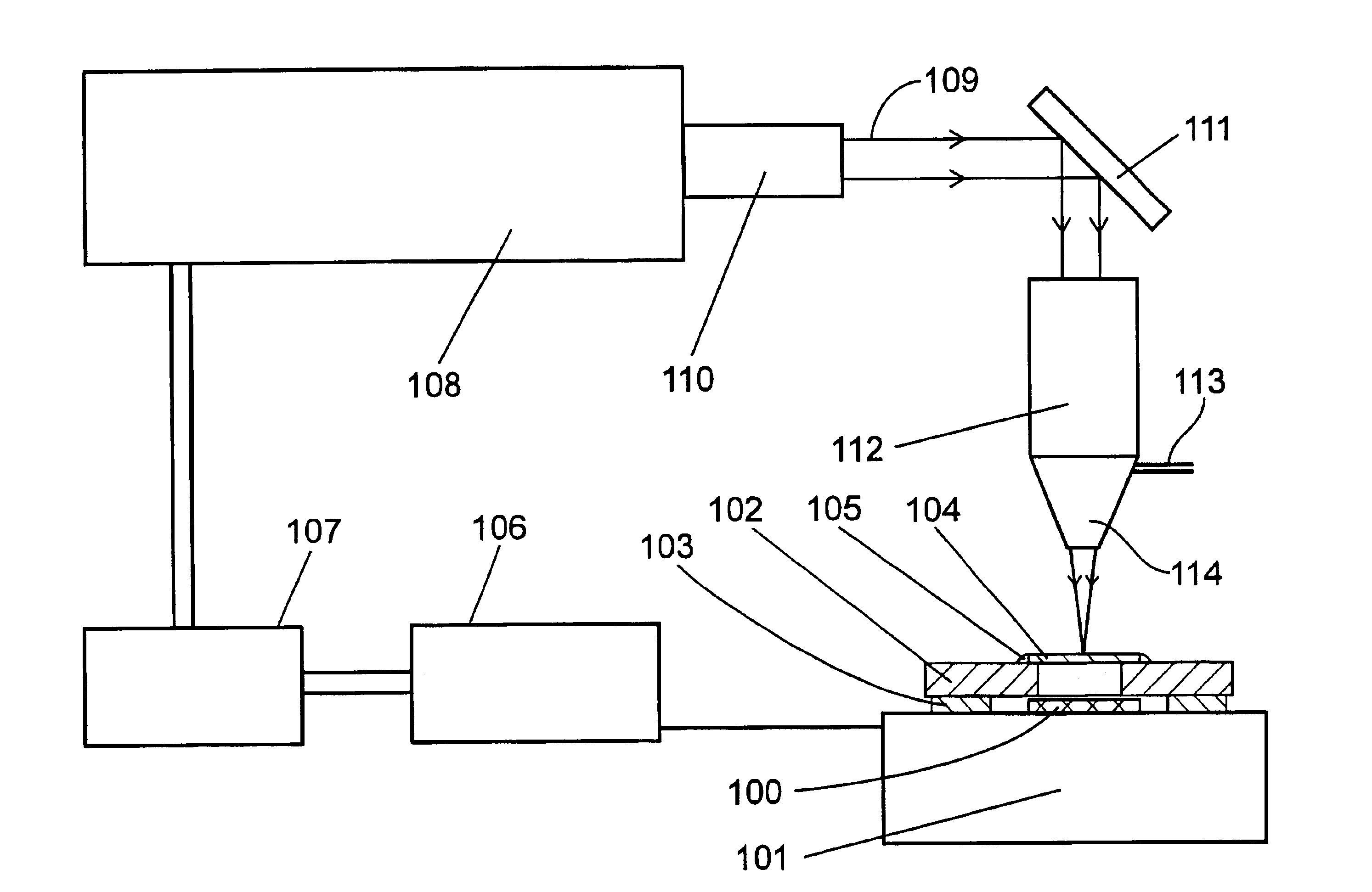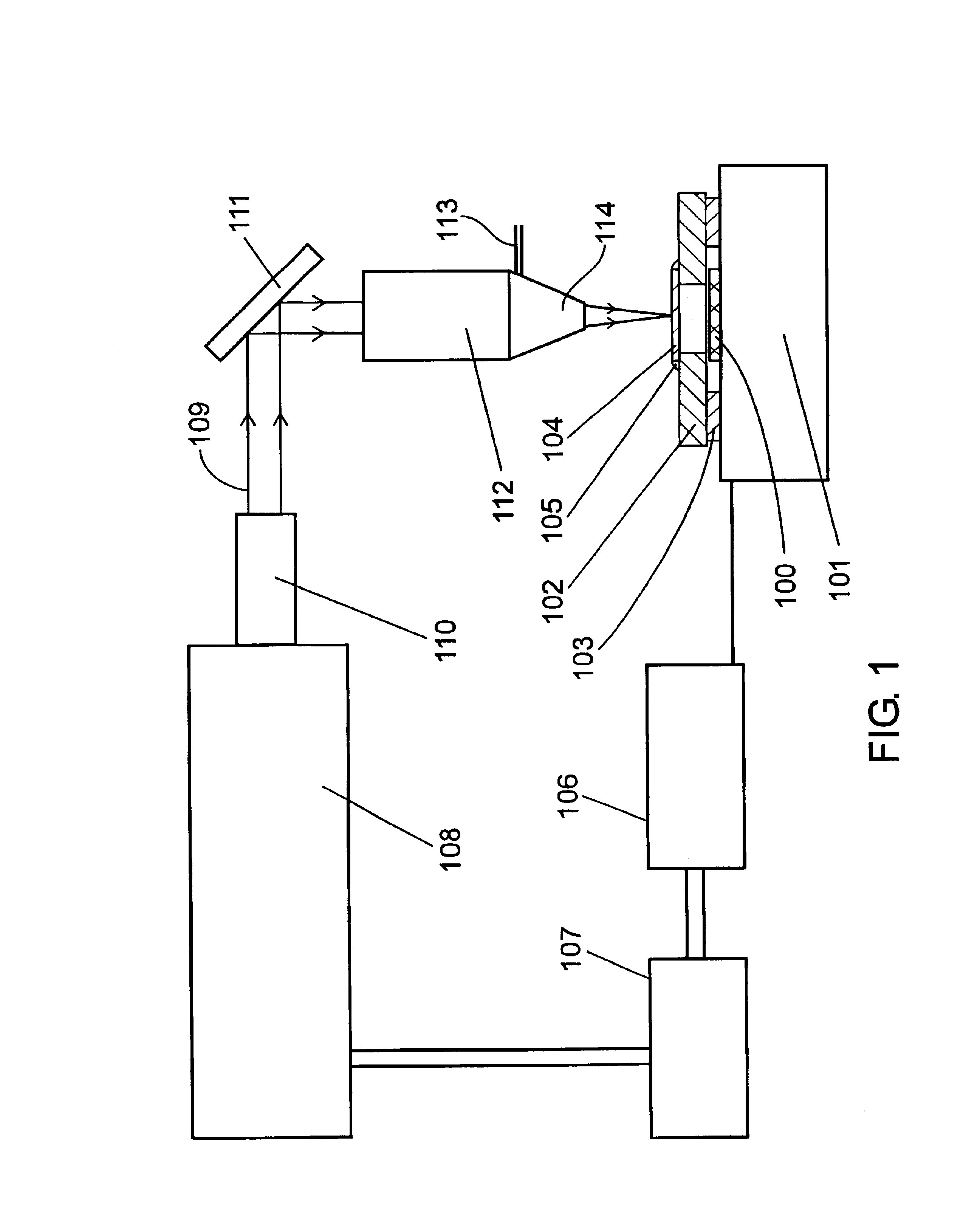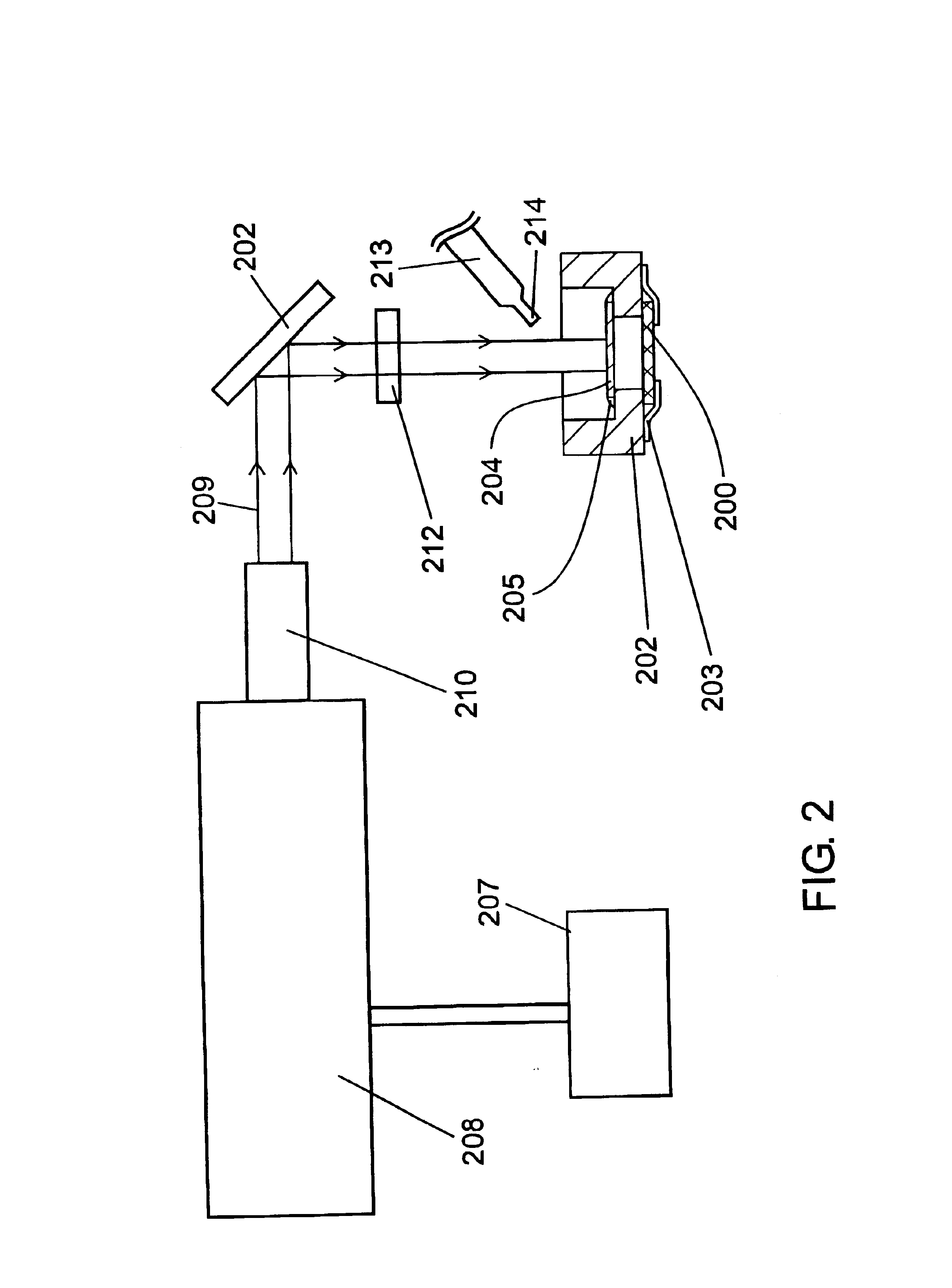Laser chemical fabrication of nanostructures
a nanostructure and laser irradiation technology, applied in the field of nanostructures, can solve the problems of general low practical application luminescence intensity from laser irradiation alone, substrate pattern defects, etc., and achieve the effects of improving the properties of luminescent porous materials, minimizing contamination, and improving control of the size and exact position of the area
- Summary
- Abstract
- Description
- Claims
- Application Information
AI Technical Summary
Benefits of technology
Problems solved by technology
Method used
Image
Examples
example 1
Silicon (Si)
Laser Pre-Treatment:
Commercial (University Wafers) p-type boron-doped (100) Si wafers 530 μm thick with resistivities ranging from 20 to 30 Ω-cm were polished and used as substrates. Laser pre-treatment of the wafers was carried out using a Nd:YAG laser as described for FIG. 1 above. The laser irradiation density was controlled so that the energy level at the irradiated area is equal to or greater than the upper limit energy level for annealing in order to maximize grain size of the p-Si obtained. The pulse width of the laser beam was 30 ns and the frequency from 1 Hz to 30 kHz. Laser power ranging from 0.4 W to 1.9 W was used to find the optimized power density. Circular Whatman Anodisc™ 13 nanosized filter masks were used, having a thickness of 60 μm and a diameter of 13 mm. For some samples, the pore size of the filter was 0.02 μm while for the other samples the pore size of the filter was 0.1 μm. Air was used as the assist gas.
Results from X-ray diffraction (XRD) (FI...
example 2
A process as described in Example 1 was carried out except that a gallium arsenide (GaAs) substrate was used instead of a silicon substrate. FIG. 7 is a scanning electron micrograph (SEM) of the lower surface layer of nano-structured gallium arsenide (GaAs) fabricated in Example 2. FIG. 7 illustrates the structures formed inside the pores after the process is complete. The magnification in FIG. 7 is about five times the magnification used in FIG. 5. It is evident that nanosize structures have been formed in the GaAs substrate.
example 3
FIG. 8 is a luminescence spectrum, taken at a temperature of 7 Kelvin, of a nano-structured porous silicon sample fabricated in Example 1. FIG. 8 shows that the energy at which the luminescence intensity is maximum is about 2200 meV, which is in the green / yellow region of the electromagnetic spectrum. FIG. 9 is a luminescence spectrum, taken at a temperature of 7 Kelvin, of a nano-structured porous silicon sample fabricated by a method similar to Example 1 except that a chemical stain etchant comprising 1:5:10 by volume HF:HNO3:H2O was used instead of a chemical stain etchant comprising 1:3:5 by volume HF:HNO3:H2O, and the substrate was not pre-cleaned with ethanol before chemical stain etching since it has been found that pre-cleaning is not necessary unless the substrate is particularly dirty or oily. The luminescence spectrum in FIG. 9 shows that the energy at which the luminescence intensity is maximum is about 2950 meV, which is closer to the blue region of the elec...
PUM
| Property | Measurement | Unit |
|---|---|---|
| energy | aaaaa | aaaaa |
| third harmonic wavelength | aaaaa | aaaaa |
| third harmonic wavelength | aaaaa | aaaaa |
Abstract
Description
Claims
Application Information
 Login to View More
Login to View More - R&D
- Intellectual Property
- Life Sciences
- Materials
- Tech Scout
- Unparalleled Data Quality
- Higher Quality Content
- 60% Fewer Hallucinations
Browse by: Latest US Patents, China's latest patents, Technical Efficacy Thesaurus, Application Domain, Technology Topic, Popular Technical Reports.
© 2025 PatSnap. All rights reserved.Legal|Privacy policy|Modern Slavery Act Transparency Statement|Sitemap|About US| Contact US: help@patsnap.com



